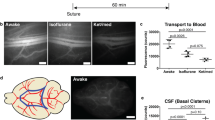Abstract
The chick embryo was used to study the relationship between the onset of tumour neovascularization and tumour growth. Walker 256 carcinosarcoma was implanted on the chrioallantoic membrane (CAM) of about 600 embryos aged 5-16 days. Tumour diameter and changes in the CAM vasculature in response to the implants were recorded daily. Representative tumours were examined by light microscopy of Epon-embedded tissue and autoradiography after injection of [3H]-thymidine. Tumours remained avascular for 72 h, after which they were penetrated by new blood vessels and began a phase of rapid growth. The rate of growth during this vascular phase was greatest for implants on 5- and 6-day-old embryos and decreased the later the day of implantation. The time of onset of tumour angiogenesis appears to be independent of the immunological state of the chick embryo, although the rate of growth after vascularization may be modified by the onset of immunity. This study suggests that the avascular and vascular phases of tumour growth are separable, and that the avascular tumour population lives under the growth constraints which limit the size of a tumour spheroid growing in soft agar or aqueous humour.
Similar content being viewed by others
Rights and permissions
About this article
Cite this article
Knighton, D., Ausprunk, D., Tapper, D. et al. Avascular and vascular phases of tumour growth in the chick embryo. Br J Cancer 35, 347–356 (1977). https://doi.org/10.1038/bjc.1977.49
Issue Date:
DOI: https://doi.org/10.1038/bjc.1977.49
- Springer Nature Limited
This article is cited by
-
Monitoring of tumor growth and vascularization with repetitive ultrasonography in the chicken chorioallantoic-membrane-assay
Scientific Reports (2020)
-
Tumor-induced neurogenesis and immune evasion as targets of innovative anti-cancer therapies
Signal Transduction and Targeted Therapy (2020)




